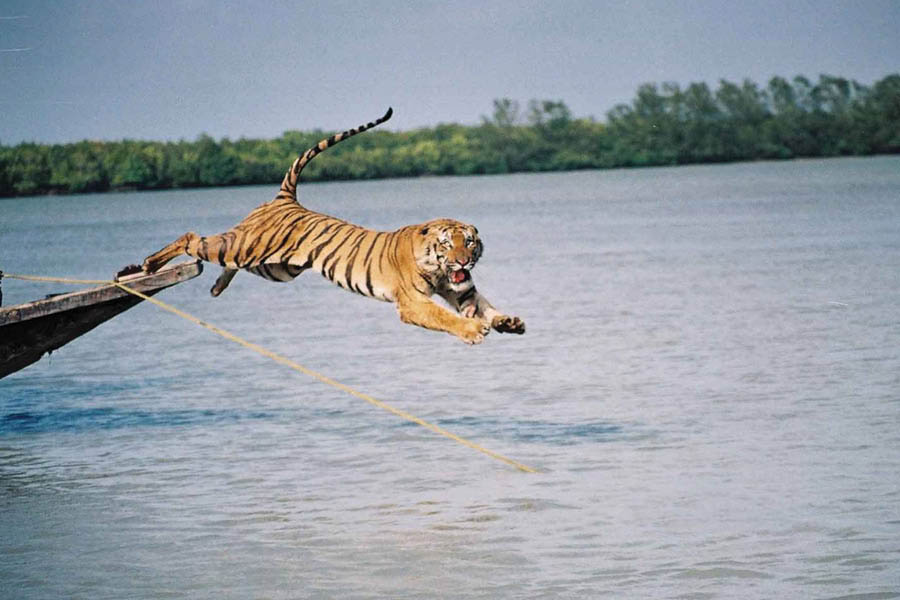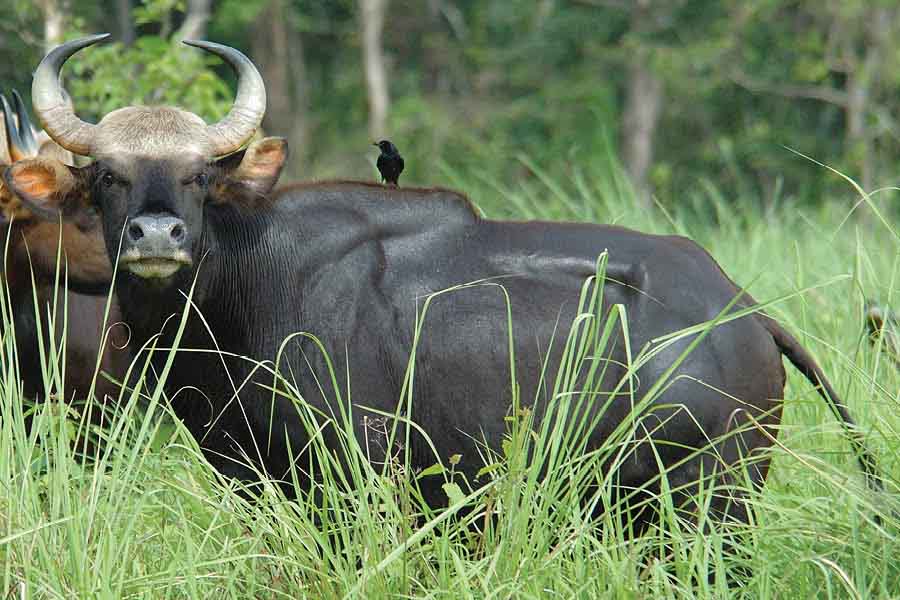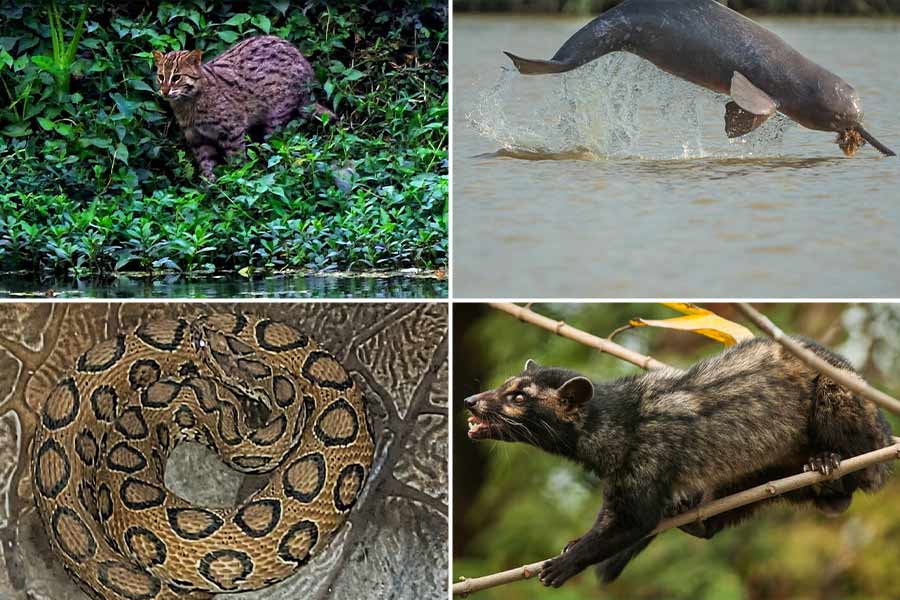“Only when the last of the animal’s horns, tusks, skin and bones have been sold, will mankind realise that money can never buy back our wildlife,” Paul Oxton, the founder of the Wild Heart Wildlife Foundation, once said. We hope never to reach that far as the importance of each species is vital when it comes to maintaining a balanced ecosystem. March 3 is World Wildlife Day, and it is crucial that the day is celebrated by understanding the need for conservation, as well as trying to make an impact on conserving the lives of those who are closer to extinction.
To mark the occasion and bring awareness to what is happening in our own state — in regions like the Sunderbans and north Bengal, My Kolkata spoke to three senior wildlife workers — Pradeep Vyas, a retired IFS (forest) officer and the former Chief Wildlife Warden, West Bengal; Biswajit Roy Chowdhury, founder of Nature Environment and Wildlife Society (NEWS); and Shiladitya Chaudhury, a board member of NEWS — to find out about conservation efforts — from the tigers of the Sunderbans and elephants and rhinos of north Bengal, to bisons, otters, Gangetic dolphins and other species.
The Sunderbans tigers

Tigers in the Sunderbans often carry the tag of being man-eaters — which isn’t true, says Pradeep Vyas Pradeep Vyas
“The Sunderbans is one of the few tiger reserves in India that has a stabilised ecosystem,” said Vyas, who served as an Indian Forest Officer in the region for 11 years. What Vyas means is that the tiger count in the region is constant at 90-110 tigers at any given time, it neither drops drastically nor goes up much. This, however, wasn’t the case when Vyas was originally posted there in 2001.
“I remember an incident where a tiger had entered a village, but didn’t harm anyone and yet it was lynched – its body cut up into pieces and thrown away,” he recalled, talking about the human-tiger conflict in the villages of the Sunderbans.
This changed when Vyas took charge of the region. Villagers were educated about tigers. It was earlier falsely believed that since tigers in the Sunderbans drank saline water, their blood pressure shoots up and this makes them kill anything in sight. Such myths gave birth to stories of all tigers in the Sunderbans being man-eaters — a claim that Vyas strongly refutes.
“In my 11 years in the region, there have been zero cases of tigers eating man. We have taken several precautionary measures to ensure that the interaction between humans and tigers is reduced,” he said.
The measures include creating nylon fencing around the village, radio collars to monitor tiger activities and also providing villagers with alternative livelihoods that prevent them from entering the forests.

Alternative livelihoods is the best way to prevent human-animal conflict in the Sunderbans Nature Environment and Wildlife Society (NEWS)
“One of the biggest problems in the Sunderbans arose from fishing. It was one of the ways humans and tigers would come into contact. So, ponds have been created in human territory where fish are cultivated to provide food and livelihood to the villagers,” said Biswajit Roy Chowdhury, who founded NEWS, an organisation that works for wildlife conservation.
NEWS has played a crucial role in reforestation of the mangroves, which mitigate brute forces of nature such as cyclones. While recent cyclones like Amphan have affected mainland Bengal severely, the effects could have been much worse without the mangroves of the Sunderbans acting as a natural barrier. “Large areas of mangroves have been uprooted by the last two cyclones that hit the eastern coast, which is why we have been working for mangrove reforestation since 2010 — and our efforts are ongoing,” Roy Chowdhury said.
So, what do the tigers of the Sunderbans eat, you might wonder, if they aren’t man-eaters and there are strict measures in place to ensure they don’t enter human territory for cattle. Vyas, who has a doctorate in Wildlife Sciences, explained how difficult it is for tigers in the Sunderbans to catch their prey. “The terrain of the Sunderbans is full of pneumatophores, which are the aerial roots of mangrove trees. These roots are sharp and if you step on them, there it will damage your foot. To catch a prey, a tiger has to exercise stealth and jump at the right moment without making a sound to catch its prey. In the swampy land of the Sunderbans, if the tiger puts one foot wrong, it might slip and create noise, causing its prey to escape. We brought in about 200 spotted deer from deer reserves across the country that had exceeded capacity and kept them in enclosures to acclimatise them to salt water because these deer are not used to drinking saline water. Once the deer were used to saltwater, given to them in slow amounts over months, we released them into the wild, creating enough prey for tigers so that they wouldn’t venture into human territory in search of cattle,” he said.

The terrain of the Sunderbans makes it difficult for tigers to catch prey Pradeep Vyas
The only time a tiger enters human territory is when it is unable to hunt due to old age. Then, the easiest thing for it is to swim across the ravine and take livestock. The balance of the Sunderbans is maintained by ensuring that no poaching takes places and restricting excessive fishing in the core areas where tigers also eat fish to survive. Ecotourism, too, is important within a sustainable capacity. Any one element being imbalanced will lead to the collapse of the whole ecosystem gradually.
“After rectifying bonds with the villagers, and helping them with development and education, we are in a place now that if a poacher enters tiger territory, the villagers immediately call the tiger reserve authorities and inform them that poachers have entered,” said Vyas, while explaining how crucial it is to maintain a balanced ecosystem.
Elephants in north Bengal

A herd of elephants cool off in a pond Pradeep Vyas
From a strength of 180 to almost 550 now, even the elephants of north Bengal have gained a new lease of life. Elephants are animals who migrate and do not usually stick to one place. So, there have been several cases of wild elephants running into human civilisation. This brings us to the problem of encroachment. “With the town of Siliguri massively expanding and developing, a lot of forest area is being eaten up, so the elephants of the region, who are used to roaming there, end up in the city and it causes problems,” said Shiladitya Chaudhury “We are trying to grow more forest area, so that these cases of wild elephants on the loose reduces. But, it is a very long and hard task. We are collaborating with several others to try and get the elephants back to their areas,” he added.
Rhinos in north Bengal

From a total of 22 rhinos in Jaldapara and Gorumara, the strength of the horned beasts has risen to the 300s Pradeep Vyas
Vyas feels that rhino conservation in north Bengal was a more difficult challenge than tigers. “While tiger conservation is a very difficult project, I felt that the Rhino projects were even more difficult — because in 1984, there were only 14 rhinos left in Jaldapara.”
Experts felt that the remaining rhinos would be poached for their horns, so they should be kept in enclosures to prevent them from going extinct in the north Bengal region. “We went undercover to find these poachers. We posed as interested buyers to bust the poaching ring because the cost of a rhino horn is equivalent or more than the cost of gold. The government supported us to save the rhinos and we had a free hand in 1988 to ensure zero poaching,” Vyas said.
Apart from stopping poaching, the second part of the project was improving the habitat for the rhinos, making the forest of Jaldapara better for them to sustain a living. NEWS stepped in to help here as well, because the conditions of the rhinos at the time were dire. “It has reached a point now where there is an overpopulation of rhinos in Jaldapara. We are working to find ways to get them transported to other regions where there are fewer rhinos,” said Roy Chowdhury.
“We have recorded 250 rhinos in Jaldapara. In Gorumara, there were just eight rhinos, and now, that number has risen to 50, which are both the highest-ever recorded figures for rhinos in these regions,” said Vyas.
Indian bisons of Jaldapara

The Indian bison is another species that was nearing extinction in Jaldapara, but continued efforts have seen their numbers rise over the years Pradeep Vyas
In 1988, the number of Indian bison was below 200. Commonly known as the Gaur, the Indian bison was nearing the red line, but in a recent census, the number is at about 5,000. “It is a sign that shows the success of conservation efforts in north Bengal over the last 25 years. From all the officials in the forest to the locals and the efforts of the government as well as the NGOs who have worked there, every species in north Bengal has multiplied several times over — which is a sign of the constant efforts to make nature better, not worse,” said Vyas.
Otters of south Bengal

Otters were considered to be extinct in south Bengal and the Sunderbans, before recent sightings proved otherwise. Very little is known about the species, which is still endangered NEWS
For years, otters were considered extinct in the Sunderbans, but it was Vyas who had the pleasure of capturing the first image of a small clawed otter. Otters have footprints similar to the Rhesus Macaque, so for years when researchers and forest officials would spot their footprints, it was assumed that it belonged to the monkey.
“Otters are highly sensitive to sound and will always hide from anything they perceive as a threat. In my time in Sunderbans, I often took a boat and entered creeks patrolling for poachers. We would switch off the engine and sit quietly and just observe our surroundings. I would have a rifle and a camera and on one of these trips, I clicked a picture of the small clawed otter. It was the first recorded photograph of the otter after it was deemed to be extinct,”said Vyas.
NEWS also has been working to find out more about the otters. The smooth coated otters are considered threatened on the IUCN Red List. “We need to learn more about the otters, from finding out their habitat to understanding their eating habits as well as understanding their endurance to saline water. Small clawed otters are found in the core areas of Sunderbans, while smooth coated otters are found in South 24 Parganas. The reason we need to learn about them is so that we know how to prevent them from extinction,” said Roy Chowdhury of NEWS.
Gangetic dolphins

The presence of a Gangetic dolphin is often a marker of the cleanliness of the river body NEWS
Another mammal on the verge of going extinct is the Gangetic dolphin. These freshwater Dolphins, whose presence often reveals the cleanliness of the water body, are getting lesser in number by the day. Extensive development projects by the Ganges means the river body is high in pollution content, making it inhabitable for Gangetic dolphins.
“Gangetic dolphins are reducing in numbers because of the pollution present in the depths of the Ganga, where they usually catch fish. Overfishing is another cause that is leading to several of these dolphins being trapped in fishing nets. Also, the motor-operated boats often go at speeds higher than necessary, injuring the dolphins that swim nearer to the top of the river – as the mammals come up for air,” said Chaudhury.
How can they be prevented from going extinct? Roy Chowdhury said, “Gangetic dolphins are already on the IUCN List and have been classified as endangered. To stop the species from going extinct, we need to identify freshwater areas of the Ganges and Brahmaputra where these dolphins can exist without external interference like fishermen and boats. If the dolphins find fresh water to exist, the chances of breeding and having a new generation of Gangetic dolphins will be possible.”
Jackals at the Kolkata airport

A file photo of a trapped jackal at the airport TT Archives
This is one that will probably come as a surprise to most, but in recent years, there have been a few furry visitors to the Kolkata airport runway. “A few years back, I got a call from the airport authorities that there was an Emirates plane that could not land and had to be redirected because the pilot spotted jackals on the runway. We got to work catching them, but after two years the project was stopped,” said Roy Chowdhury.
There are more reports that keep popping up of these visitors on the runways, but what is the solution? “The project has to be for a minimum of five years, so that we can round up all the jackals and put them in their proper surroundings. In five years, we can clean up the entire area, but a two-year project is a stop-gap effort. This is because the ones we leave behind will have children and then there will always remain a certain number of jackals in the region.” said Roy Chowdhury.

